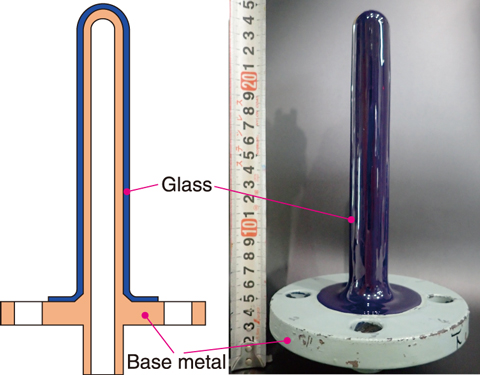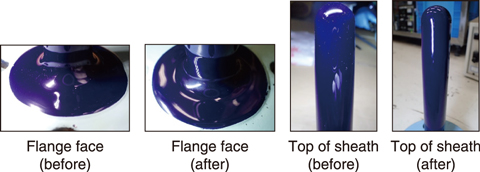
Fig.6-12 Corrosion rate of glass-lined steel in a hydroiodic acid and iodine solution

Fig.6-13 Prototype of the glass-lined thermocouple protective sheath

Fig.6-14 External appearance of the prototype after the heat cycle test
Structural materials with high corrosion resistance are required in the iodine-sulfur (IS) thermochemical water-splitting hydrogen production process, which occurs in a corrosive liquid or gaseous environment over a wide temperature range. As glass is well known as a corrosion resistant material, glass-lined steel was employed, which has both corrosion resistance and structural strength. Although glass-lined steel has adequate use results for sulfuric acid, it has not been thoroughly investigated in a hydroiodic acid environment. In addition, it may be broken by a microscopic defect because the lined glass that contacts the corrosive solution is a brittle material. A hydroiodic acid corrosion test was thus performed, and breakage factors were analyzed by fault tree analysis and quality management in manufacturing was refined.
Corrosion rates were determined by weighing the test specimens before and after exposure to the hydroiodic acid and iodine solution. The solution was heated to approximately 115 ℃ under atmospheric pressure. The corrosion rate was approximately 0.02 mm/y after 150 h exposure, significantly lower than the criterion of excellent corrosion resistance (0.1 mm/y), as shown in Fig.6-12.
Additionally, defects causing breakage of the lined glass in manufacturing process were revealed, including cracks, inner bubbles, foreign substance contamination, insufficient glass thickness, and generation of pinholes. To eliminate these defects, quality management was refined by performing detailed visual observations at each manufacturing step, measuring the glass thickness after glass lining, and performing high-voltage inspection to find pinholes. From this basis, glass-lined thermocouple protective sheaths were made and subjected to heat cycle and bending load testing (Fig.6-13). No breakage occurred on the lined glass after performing 10 heat cycles from room temperature to 180 ℃, nor after excessive bending load up to 150 kgf on the top of the sheath (Fig.6-14).
Future work will focus on long term testing involving the Hydrogen Production Test Facility to confirm the reliability of glass-lined thermocouple protective sheaths.